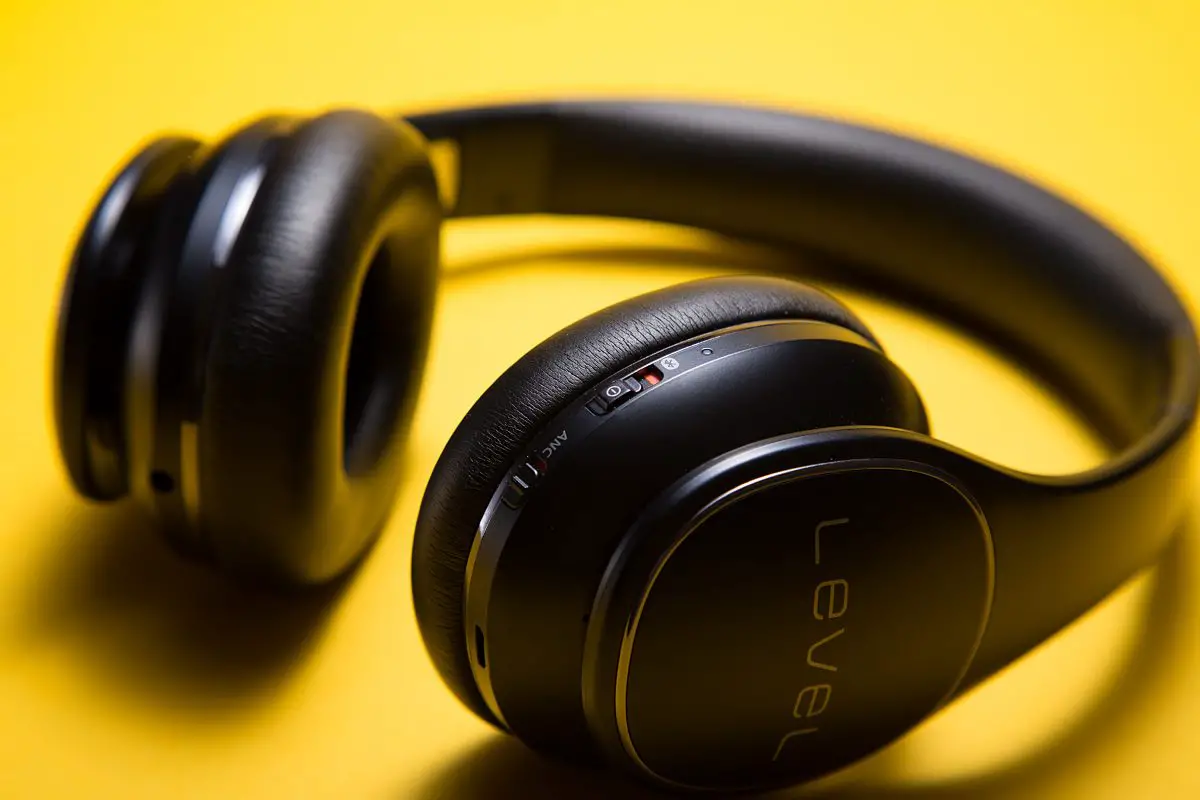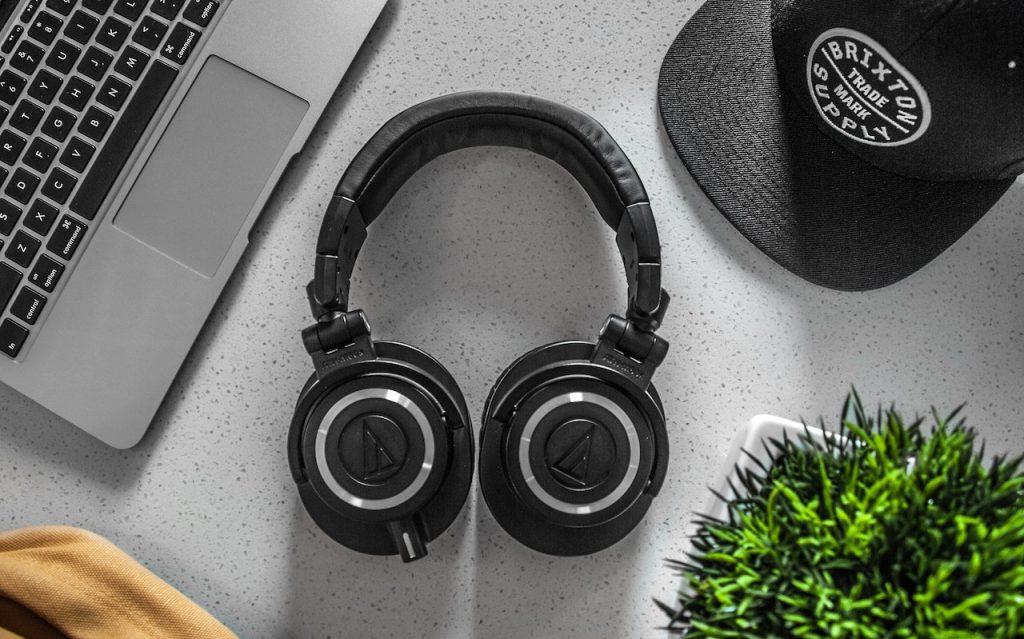Wireless headphones are a popular choice for people who want to enjoy their music without dealing with wires. They’re easy to carry and don’t take up much space. Unfortunately, not knowing how wireless headphones work can lead to incorrect usage. This article covers the basics of wireless headphones. We will cover what types of headphones there are, how they work, and some of the benefits they offer. So if you’re looking to buy a new pair of headphones or want to know more about the technology behind them, this post is for you!
So how do wireless headphones work? Wireless headphones connect to devices by “pairing” to devices via radio or infrared signal. Most headphones use Bluetooth technology. With Bluetooth, devices can connect and share information quickly by sending radio waves. Wireless headphones pick up the RF or IR signal and convert it into sound.
How do wireless headphones work?
Wireless headphones must be coupled with an audio source that can send audio signals wirelessly. It encodes these signals before the source device sends them through a radio or infrared channel. The wireless headphones pick up the RF or IR signal and convert it into sound.

As their name implies, wireless headphones do not use cords to transmit sound. The audio signal that comes in through the headphones’ built-in receivers powers the headphones’ drivers. In technical terms, this “wireless signal” is the carrier wave. Radio waves can be sent through the air with the help of transmitters, which change the audio signal into a form that can be sent wirelessly (called the “carrier wave”).
Radio waves can be sent through the air with the help of transmitters,
which change the audio signal into a form that can be sent wirelessly,
The carrier wave goes in only one direction and has a single frequency in those ranges. For example, sound waves often include tones between 20 and 20,000 Hz. The wireless receiver reads the carrier wave’s modulating signal (the audio signal). For receivers to pick up wireless signals, they must be set to the right carrier wave frequency. When a digital audio signal is received, it is transformed into an analog one.
Let’s go over the steps that lead to the successful wireless audio transmission for headphones:
- A wireless transmitter receives an audio signal from an audio source.
- The wireless transmitter encodes the modulating signal from the audio stream into a carrier wave.
- This carrier wave of a single frequency travels across the void.
- The wireless receiver absorbs the signal and decodes the audio since it is set to pick up the single-frequency carrier wave.
- A digital-to-analog converter is then used to transform the digital audio signals to analog ones (if the headphones are designed for it).
- The analog audio signal is amplified via a built-in amplifier.
- The drivers in your headphones will receive enhanced sound.
- Audio signals, made of electrical energy, are changed by the headphones’ drivers, which are made of mechanical wave energy.
A digital-to-analog converter (DAC) and amplifier are built into each unit, so wireless headphones work just as well as their wired counterparts.
AKAI Professional MPK Mini MK3

AKAI Professional MPK Mini MK3
What are the types of wireless headphones?
Background knowledge of the various wireless technologies available is beneficial when shopping for headphones. But there are so many different kinds of wireless headphones on the market that it’s hard to know which ones to buy. Here is some information about the different wireless headphones to help you make an informed decision.
Infrared headphones
Infrared is the same technology that runs your TV remote. When using infrared, there can be no physical barriers between the sender and the receiver. Two distinct varieties of infrared (IR) wireless headphones exist; single and dual-channel models. The difference between single-channel and dual-channel is that dual-channel lets two separate audio signals be sent simultaneously. As a result, there is some variation in infrared frequency from one set of wireless headphones to the next. They have a 10-meter effective range.
Radio frequency headphones
Stereo frequency modulation technology sends sound signals to these wireless headphones from a transmitter. The frequencies that wireless RF headphones can use range from about 900 MHz to 3.2 GHz. The typical range for this kind of wireless technology is about 300 feet.
Bluetooth wireless headphones
Bluetooth is the most popular wireless technology for headphones. Most consumer electronics, like most wireless headphones and earbuds, have Bluetooth connections. Also, wireless earphones come with many different versions of Bluetooth technology, with 5.0 being the most recent.

Wireless headphone features and descriptions
The table below provides a concise overview of the features and descriptions of wireless headphones. It highlights the key functionalities and technical aspects of how wireless headphones work.
| Features | Description |
|---|---|
| Connectivity | It provides a wireless range of up to 30 feet or 10 meters |
| Transmission | Transmits audio signals wirelessly from the source device |
| Battery Life | Offers an average battery life of 20-30 hours for uninterrupted use |
| Range | Provides a wireless range of up to 30 feet or 10 meters |
| Sound Quality | Delivers high-quality audio with crisp and clear sound |
| Controls | Equipped with on-board controls for volume, playback, and calls |
| Noise Cancellation | Reduces external noise for an enhanced listening experience |
| Pairing | Enables easy pairing with compatible devices |
| Latency | Ensures minimal audio delay for seamless synchronization |
| Charging | Recharges via USB cable or wireless charging pads |
Advantages and disadvantages of wireless headphones
The advantages of wireless headphones include the following:
- Most modern wireless headphones adhere to the Bluetooth protocol, which is compatible with a wide range of audio devices.
- Independence from the listening gadget.
- In most cases, a Bluetooth (Class 2) connection can go up to 32 feet in distance.
- Radiofrequency (2.4 GHz) communication can travel at least 91 meters (300 feet).
- IR has a maximum range of 32 feet.
The disadvantages of wireless headphones include the following:
- Powered by batteries, which wear out over time and must be replaced or recharged often.
- The battery life of any device using the Bluetooth protocol is shortened.
- The built-in receiver and amplifier result in a higher price (and potential DAC).
- In comparison to wired headphones, it might be annoyingly slow to connect.
Do’s and don’ts when using wireless headphones
Remember to always refer to the specific guidelines and instructions provided by the manufacturer of your wireless headphones for detailed usage recommendations. Here is a data table summarizing the do’s and don’ts when using wireless headphones:
| Do’s | Don’ts |
|---|---|
| Pair your wireless headphones according to the manufacturer’s instructions. | Expose your wireless headphones to water or excessive moisture. |
| Regularly charge your wireless headphones following the manufacturer’s guidelines. | Listen at excessively high volumes for prolonged periods. |
| Store your wireless headphones in a safe and dry place when not in use. | Subject your wireless headphones to extreme temperatures. |
| Clean your headphones regularly with a soft, lint-free cloth. | Misplace or mishandle your wireless headphones. |
| Check compatibility with different audio devices before use. | Share your wireless headphones with strangers. |
| Install firmware updates provided by the manufacturer when available. | Neglect firmware updates for your wireless headphones. |
If you want more tips and insights, watch the video “Best Wireless Gaming Headsets – 2022 Holiday Edition!” from the GadgetryTech YouTube channel.
Frequently asked questions (FAQ)
Do you still have questions? Below are some of the most commonly asked questions about wireless headphones.
What is the difference between wireless and Bluetooth headphones?
Bluetooth headphones use short-range radio waves to send and receive sound. Other wireless headphones use different technologies, such as infrared, internal memory, or KleerNet, to send and receive sound.
What is the difference between earbuds and wireless headphones?
Compared to canned music, earbuds are easier to carry, less expensive, and better for working out. But if you’re willing to pay more, headphones often have better sound quality, cancel out more noise, and last longer on a single charge.
Which is better, Bluetooth or wifi?
As a rule, Bluetooth is preferable for low-power mobile gadgets. On the other hand, wifi is superior for fixed, bigger devices needing constant web access.
Conclusion
For the best audio experience, use wireless headphones. You will not only enjoy your freedom, but you will also enjoy unprecedented convenience and comfort. Wireless headphones are lightweight and easy to use. So, whether you are looking for a durable pair or want something stylish and classy, look no further than wireless headphones! So, do you use wireless headphones? And did I cover everything you wanted to know? Let me know in the comments section below (I read and reply to every comment). If you found this article helpful, share it with a friend and check out my full blog for more tips and tricks on music production. Thanks for reading, and never stop making music.
Key takeaways
- To function, wireless headphones must be coupled with an audio source.
- As the name suggests, wireless headphones don’t use cords to send sound.
- Many wireless headphones are on the market, leaving many consumers confused about which ones to buy.
- Bluetooth technology is less susceptible to interference than wifi.
- Not all wireless devices use Bluetooth tech. However, all Bluetooth gadgets are wireless.
- Your wireless Bluetooth headphones should display the device’s unique address assigned to every Bluetooth device.















